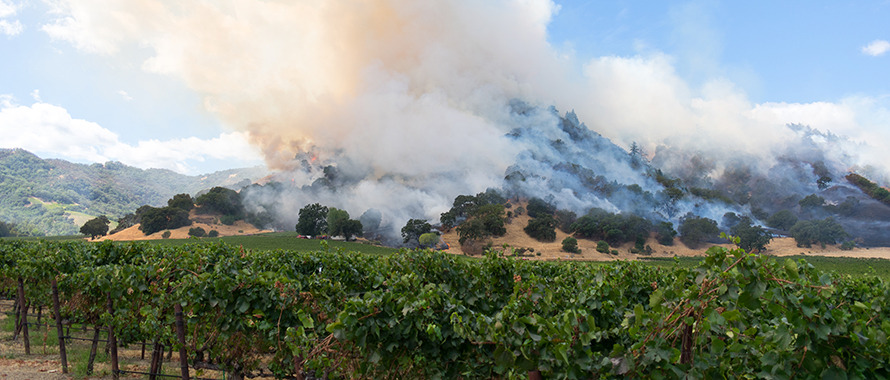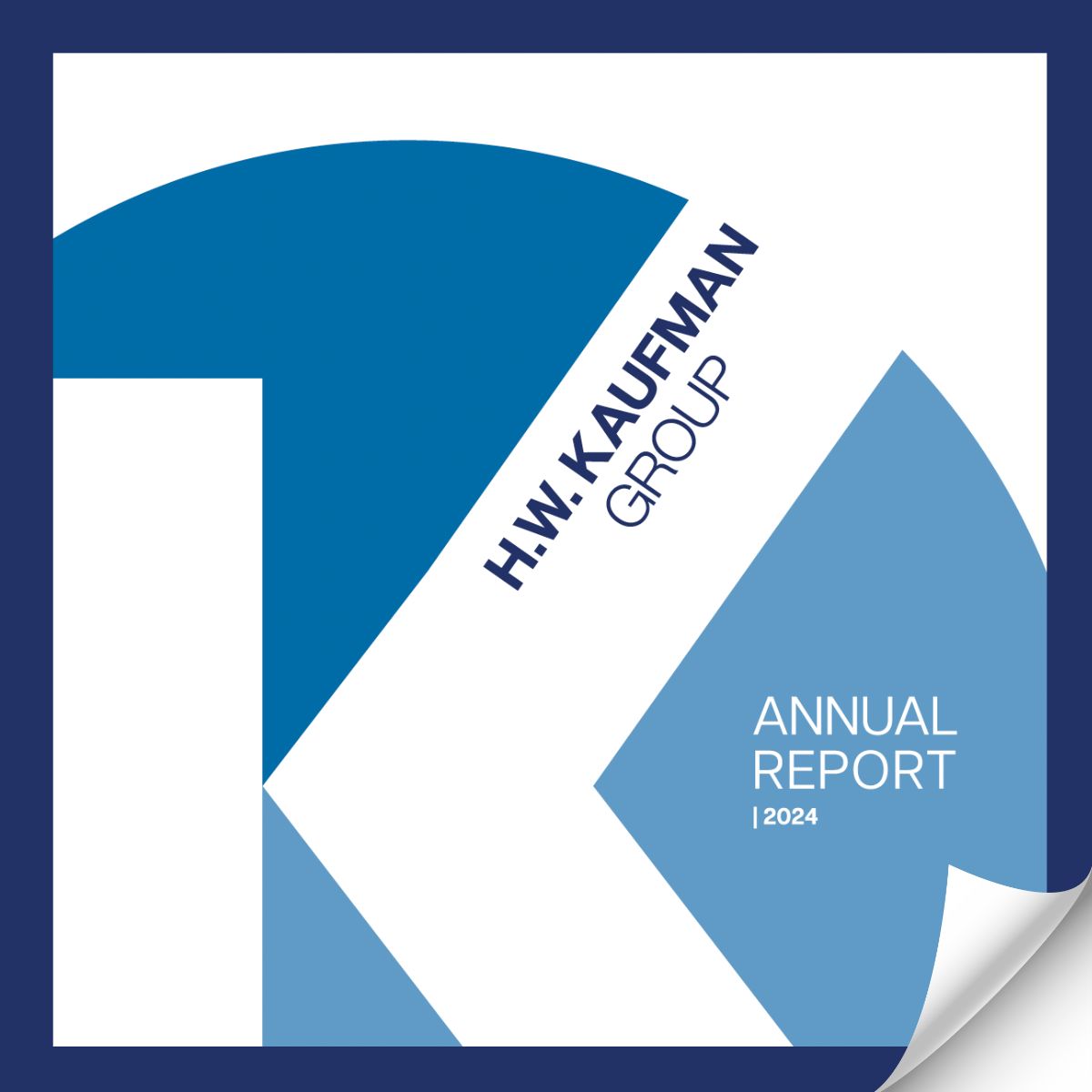The Glass Fire, one of 23 major wildfires burning across California, has destroyed or damaged at least 17 wineries in Napa Valley. More than 215 other wineries are under mandatory evacuation orders. As of October 5, the wildfire had also destroyed 550 homes and more than 66,800 acres.
The small vineyard at Behrens Family Winery in St. Helena suffered extensive damage. The winery also lost its primary building and three full tanks from this year’s harvest, equaling about 900 bottles of wine valued at $60 to $200 each.
In Calistoga, the Castello di Amorosa winery lost 120,000 bottles of wine worth $5 million in the wildfire. Vintners in the area have said the Glass Fire is forcing an earlier end to the season’s harvest and could contribute to a severe red wine shortage.
The wineries are among thousands of commercial and residential properties threatened by wildfires currently raging across the western U.S., underscoring the critical need for Wildfire Insurance to address the growing threat.

What recent years have taught us is we must anticipate and prepare for the worst-case wildfire scenario
“We know the brush scores and what the wildfire potential is for these areas,” said Rich Gobler, Corporate Senior Vice President, Managing Director, Burns & Wilcox, San Francisco, California. “Yet we always hope conditions will change and are devastated that reality has exceeded some of the direst predictions.”
The danger is becoming more apparent. Wildfires hit multiple wineries in Northern California in 2017, said Ian Hanson, Associate Vice President, Underwriting Director, Burns & Wilcox, San Francisco, California. “The magnitude of those wildfires was unexpected,” he said. “What recent years have taught us is we must anticipate and prepare for the worst-case wildfire scenario.”
Increasing wildfires in U.S., Canada put businesses at risk
So far this year, wildfires have already burned 7.8 million acres1 in the U.S. In California alone, 8,320 wildfires have scorched over 4 million acres this year—more acres than in the last three years combined and more than double the state’s previous record set in 2018.2 In 2018, insurance claims related to California wildfires totaled over $20 billion.3
While Canada has experienced an unusually mild wildfire season in 2020,4 the country averages about 8,000 wildfires annually.5
Costs a company incurs from wildfire-related property damage, including lost inventory and other building contents, are typically included in its Commercial Property Insurance policy coverage. Loss of business income due to a wildfire is another commonly covered expense, said Gobler, adding that insuring the full value of a business is crucial.
“Businesses could go bankrupt,” Gobler said. “If a winery loses $5 million worth of wine and that stock is not adequately insured, it could face significant challenges paying its growers, operating costs, loans and any other expenses. That kind of shortfall can easily lead to filing for bankruptcy.”
Recovering from a wildfire is often a lengthy process, said Jason Eng, Senior Underwriter, Burns & Wilcox, Toronto, Ontario. After Alberta’s record-setting 2016 Fort McMurray wildfire, which caused $3.7 billion in property damage claims, rebuilding efforts are ongoing.6

If a winery loses $5 million worth of wine and that stock is not adequately insured, it could face significant challenges paying its growers, operating costs, loans and any other expenses. That kind of shortfall can easily lead to filing for bankruptcy.
“It was a major catastrophe,” Eng said of the Fort McMurray fire, noting that estimated total losses that included costs not covered by Wildfire Insurance were $10 billion. “When a wildfire occurs in a remote area, recovery can be slowed by a lack of resources.”
While a winery can rebuild its structures after a wildfire, it can take years for the soil to be right for a vineyard to resume full operation, Eng added.
Companies should review their Commercial General Liability (CGL) Insurance regularly, he noted, as a business can be held liable if a wildfire is sparked by its operations or on its property. In Canada, a company deemed responsible for starting a wildfire can be held liable for related damage costs under the Forest Fires Prevention Act, Eng said.
“The essence of that act is that the government may seek reimbursement for any forest fire-fighting expenses incurred,” he said. “That is why we offer a forest firefighting expense coverage option with our CGL Insurance.”
Defense program can help homeowners limit wildfire damage
Officials in Santa Rosa assessing residential damage from the ongoing Glass Fire reported some homes were completely leveled; others, though still standing, were missing ceilings or were severely smoke damaged.7 Additionally, homeowners are incurring wildfire evacuation-related expenses with increasing frequency as wildfire risks increase each year. More than 500,000 residents of Oregon were under evacuation orders in early September amid dozens of major wildfires8; the number of evacuations caused by wildfires is also on the rise in Canada and expected to keep growing along with wildfire intensity and frequency.9

Matching policy and coverage options with the individual homeowner is vital to avoid potentially considerable uninsured losses.
Climate change-related weather conditions and increased development in wildfire-prone areas mean homeowners should take care to remain in close contact with their insurance agent regarding their Homeowners and Dwelling Insurance needs and any policy enhancements that could help protect them and their assets. Extended replacement cost coverage is one such enhancement; this coverage helps with costs when a rebuild project goes over budget. Loss of use coverage is an enhancement that helps pay living expenses homeowners may incur while a home is repaired or rebuilt.
“It is especially important for homeowners in wildfire-prone areas to discuss their existing coverage and available options with their insurance agent on a regular basis,” said Bill Gatewood, Corporate Senior Vice President, National Personal Insurance Practice Leader, Burns & Wilcox, Detroit/Farmington Hills, Michigan. “Matching policy and coverage options with the individual homeowner is vital to avoid potentially considerable uninsured losses.”
Wildfire risk management services are available to homeowners with policies backed by Burns & Wilcox’s partnership with Wildfire Defense Systems (WDS), a private insurance fire resource company that offers essential fire mitigation services to homeowners insured through its partner companies. Burns & Wilcox has expanded its Residential Property Insurance as other underwriters have limited and even withdrawn coverage wildfire-prone regions.
“WDS specializes in helping homeowners mitigate potential damage or destruction of their homes during a wildfire,” Gatewood said.
WDS sends resources to evacuation zones to protect individual homes during active wildfires. They create fuel breaks with fire-retardant gels or foam, set perimeter sprinkler systems, cover vents to keep embers from entering, and remove combustible materials from around homes, all to help insured homeowners safeguard their residences.
“Public firefighters are focused on saving lives and creating a break line during a wildfire; WDS staff, on the other hand, are dedicated to protecting individual homes,” Gatewood explained.
Eligible homeowners in ten states—Arizona, California, Colorado, Idaho, Montana, Nevada, Oregon, Utah, Washington and Wyoming—can take advantage of Burns & Wilcox’s WDS program.
Wineries, other at-risk properties face shrinking insurance market
Increasingly frequent and destructive wildfires in recent years have forced some carriers to stop offering fire coverage. Carriers of both Commercial Property Insurance and Homeowners and Dwelling Insurance often exclude wildfire-related losses and instead direct California property owners to purchase a standalone California FAIR Plan policy, which covers fire exclusively.
“This year’s wildfire season, including the Glass Fire’s impact on wineries, is bound to exacerbate existing coverage shortages,” Gobler said, pointing out that Burns & Wilcox has already seen an uptick in coverage requests from wineries that have been unable to renew their previous policies. “Policy premiums could be four to six times higher; many seeking insurance may only be able to get coverage under the FAIR Plan.”
This is the inevitable result of continued development in areas at high risk for wildfires, Eng noted. “As homes or businesses move into new areas, the risks for forest and grass fires increase,” Eng said. “Increased risk leads to increased losses; when insurance companies pay more, higher premiums follow.”
Inflation also leads to rising premiums, he noted. “The cost of everything has gone up; consequently, remediation after a wildfire loss will be more expensive and premiums will reflect that,” Eng explained. A knowledgeable insurance broker or agent, he stressed, can help homeowners and business leaders navigate such changes. “An experienced broker or agent will be able to identify any coverage gaps as well as provide invaluable advice on what limits are needed.”
Market knowledge is crucial, Gobler emphasized. “Understanding the Wildfire Insurance marketplace is as important as understanding wildfire risk,” he said. “A broker or agent who understands how to access the excess and surplus lines marketplace and the FAIR Plan to assemble the appropriate coverage is an invaluable resource.”
Hanson agreed, noting that “not every wholesaler will have the same market access.”
Sources
1National Interagency Fire Center, “Year-to-date statistics.” Updated October 6, 2020.
2Center for Disaster Philanthropy. “2020 North American Wildfire Season.” Updated October 6, 2020.
3Deutsche Welle. “West Coast fires will cost US economy dearly.” DW, September 17, 2020.
4Dawson, Tyler. “As much of U.S. burns, western Canada has quieter-than-usual wildfire season due to rain and COVID lockdowns.” National Post, September 11, 2020.
5Government of Canada’s Government Operations Centre. “Get Prepared: Wildfires.” October 30, 2019.
6Thurton, David. “Fort McMurray rebuild lagging 2 years after the wildfire.” CBC News, May 1, 2018.
7Canon, Gabrielle. “Charred homes and crumbled walls: tallying the destruction of a California wildfire.” The Guardian, October 1, 2020.
8Newburger, Emma. “Destructive wildfires tear through U.S. West Coast, prompt widespread evacuations in Oregon.” CNBC, September 11, 2020.
9Government of Canada. “Wildland fire evacuations.” July 15, 2020.




